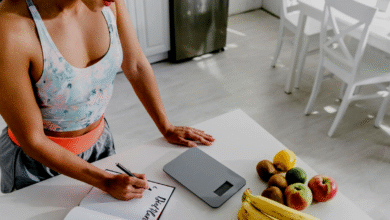How to Monitor Your Blood Pressure at Home with FDA-Approved Devices
Learn to use FDA-approved blood pressure monitors correctly for accurate at-home readings Essential tips for proper monitoring and heart health management.

Monitoring your blood pressure at home using FDA-approved devices is a crucial step in managing hypertension and maintaining heart health. High blood pressure often shows no symptoms but can lead to serious complications like heart disease, stroke, and kidney damage if left unchecked. With accurate and reliable FDA-approved blood pressure monitors, you can track your readings regularly, detect potential issues early, and work with your doctor to adjust treatment plans as needed.
Home monitoring eliminates the variability of clinic readings caused by stress (white coat hypertension) or missed high readings (masked hypertension). By using FDA-approved devices, you ensure medical-grade accuracy, allowing for better long-term management of your cardiovascular health. This guide will help you choose the right monitor, measure correctly, and interpret your results for optimal blood pressure control.
How to Monitor Your Blood Pressure at Home with FDA Devices
Why Monitoring Blood Pressure at Home is Important
High blood pressure, or hypertension, is often called the “silent killer” because it typically has no symptoms but can lead to severe complications like heart disease, stroke, and kidney failure. Traditional clinic measurements may not always provide an accurate picture due to “white coat hypertension” (elevated readings due to stress) or “masked hypertension” (normal readings at the clinic but high at home). Home monitoring helps overcome these limitations by providing consistent, real-world data.
Choosing the Right FDA-Approved Blood Pressure Monitor
Upper Arm vs. Wrist Monitors
Upper arm monitors are generally more accurate and recommended by healthcare professionals. They use an inflatable cuff that wraps around the upper arm, aligning with the heart for precise readings. Wrist monitors, while convenient, are more sensitive to positioning and movement, which can lead to inaccurate results if not used correctly.
Automatic vs. Manual Monitors
Automatic (digital) monitors are the most user-friendly, as they inflate and deflate with the push of a button. Manual monitors, which require a stethoscope, are less common for home use and are typically used by medical professionals.
Cuff Size Matters
An ill-fitting cuff can lead to incorrect readings. Most monitors come with adjustable cuffs, but it’s essential to measure your arm circumference and choose a cuff that fits properly.
Validation and FDA Approval
Look for monitors that have been validated by organizations such as the Association for the Advancement of Medical Instrumentation (AAMI) or the British Hypertension Society (BHS). The FDA-approved blood pressure monitors will typically list their clearance status in the product details.
How to Measure Your Blood Pressure Accurately at Home
Prepare Properly
For reliable measurements, avoid stimulants like caffeine and nicotine, as well as physical activity, for 30 minutes before checking your blood pressure. These factors can temporarily elevate your readings. Then sit calmly in a quiet environment for 5 full minutes to let your body settle into its natural resting state – this waiting period allows your cardiovascular system to stabilize and provides the most accurate baseline reading. Rushing this process may lead to falsely high numbers that don’t reflect your true blood pressure.
Correct Positioning
For accurate readings, sit properly in a chair with full back support, keeping your feet flat on the floor to promote proper circulation. Rest your arm comfortably on a table or armrest so the cuff is positioned at heart level – this alignment ensures your blood pressure isn’t artificially elevated by gravity. This supported, relaxed posture mimics clinical measurement conditions and provides the most reliable results. Avoid crossing your legs or letting your arm hang unsupported, as these positions can skew readings by 5-10 mmHg.
Proper Cuff Placement
For proper cuff placement, position it directly on your bare upper arm about one inch above the elbow crease, ensuring the tube runs down the center of your inner arm. The cuff should fit snugly – tight enough to stay secure but loose enough that you can comfortably slide one fingertip beneath it. Most importantly, align the cuff’s artery marker (usually indicated by an arrow or line) with your brachial artery along the inner arm to ensure the sensor properly detects blood flow for an accurate reading.
Take Multiple Readings
For optimal accuracy, take 2-3 consecutive readings during each monitoring session, pausing 1-2 minutes between measurements to allow your blood vessels to recover. This accounts for natural variability and helps eliminate outlier results. Record all readings in your log and calculate the average, as this combined value provides the most reliable representation of your true blood pressure at that time.
Maintain Consistency
For reliable results, take your blood pressure at the same times each day, ideally in the morning before medications/breakfast and in the evening before dinner. This consistency accounts for natural daily fluctuations and provides comparable data over time. Record each reading with date, time, and any relevant notes (like recent activity or stress). Use a notebook, app, or your monitor’s memory function.
Tracking and Sharing Your Blood Pressure Data
Keeping a log of your readings helps your doctor make informed decisions about your treatment. Many modern FDA-approved blood pressure monitors come with Bluetooth connectivity, allowing you to sync readings with smartphone apps. Alternatively, you can maintain a manual log, noting the date, time, and any relevant factors like stress or physical activity.
Common Mistakes to Avoid
An improperly sized blood pressure cuff whether too tight or too loose can lead to inaccurate readings. A cuff that’s too tight may overestimate your blood pressure, while one that’s too loose can underestimate it. Your posture significantly impacts blood pressure measurements. Slouching, crossing your legs, or letting your arm hang unsupported can distort readings. For accurate results, sit upright in a chair with your back supported, feet flat on the floor, and arm resting at heart level on a table.
When to Consult a Doctor
If your readings consistently show systolic (top number) above 130 mmHg or diastolic (bottom number) above 80 mmHg, consult your healthcare provider. Additionally, if you experience symptoms like severe headaches, dizziness, or chest pain alongside high readings, seek medical attention immediately.
Read More: How to Boost Your Child’s Immunity with a Balanced Diet
Conclusion
Monitoring your blood pressure at home with FDA-approved devices empowers you to take an active role in managing your cardiovascular health. These reliable, clinically validated monitors provide accurate readings that help you and your healthcare provider track trends, adjust medications, and make informed lifestyle changes. By incorporating regular home checks into your routine, you can detect potential issues early and prevent serious complications associated with hypertension.
Remember, consistency is key when using FDA-approved blood pressure monitors follow proper measurement techniques, maintain a log of your readings, and share the data with your doctor. With the right device and approach, home monitoring becomes a simple yet powerful tool for maintaining optimal blood pressure and overall wellbeing. Take control of your health today by making home blood pressure monitoring a regular part of your healthcare regimen.
FAQs
How often should I check my blood pressure at home?
For those with hypertension, checking 1-2 times daily is recommended. Others may monitor weekly or as advised by their doctor.
Are wrist blood pressure monitors accurate?
While convenient, wrist monitors are less reliable than upper arm devices. Proper positioning is crucial for accurate readings.
Can stress affect my blood pressure readings?
Yes, stress and anxiety can temporarily elevate blood pressure. Always relax for 5 minutes before measuring.
What is a normal blood pressure range?
A normal reading is below 120/80 mmHg. Elevated blood pressure is 120-129/<80, and hypertension is 130/80 or higher.
Do I need to calibrate my home blood pressure monitor?
Most digital monitors remain accurate for years, but checking against a doctor’s manual reading annually is a good practice.











